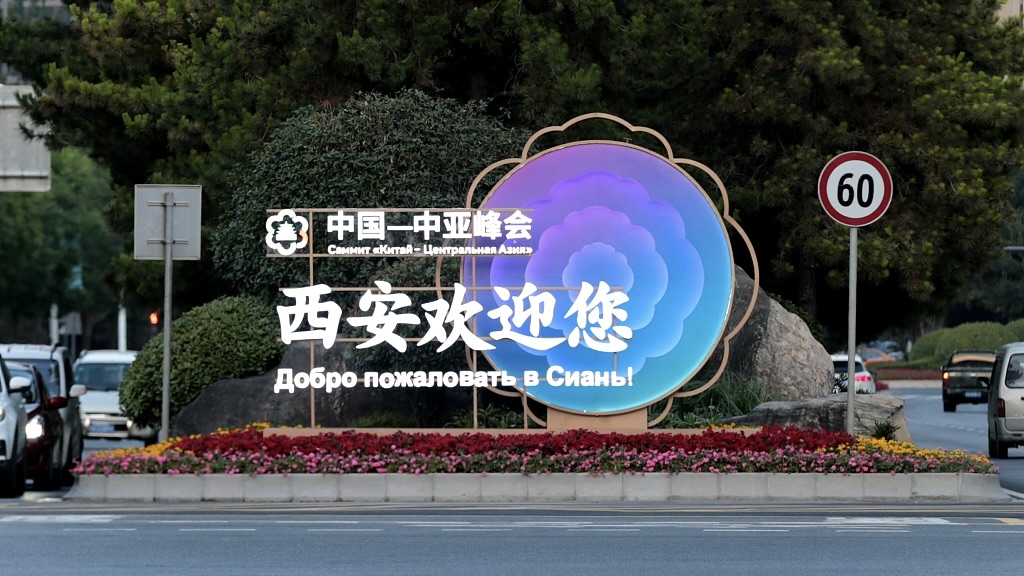
From May 18 to 19, President Xi Jinping will host the China-Central Asia Summit in Xi'an, Shaanxi Province. /CFP
From May 18 to 19, President Xi Jinping will host the China-Central Asia Summit in Xi'an, Shaanxi Province. /CFP
Editor's Note: Liu Chang is an assistant researcher with the Institute of Russian, East European and Central Asian Studies, Chinese Academy of Social Sciences (CASS). The article reflects the author's opinions and not necessarily the views of CGTN.
This year marks the 10th anniversary of the Belt and Road Initiative (BRI). In the past 10 years, over 150 countries and more than 30 international organizations have participated in the joint construction of the initiative and built the world's largest international economic cooperation platform. As of January 2023, China has signed more than 200 cooperation documents on the joint construction of the BRI with 151 countries and 32 international organizations. Among them, Central Asia, as the core area of the initiative, has further highlighted its geographical advantages, continued to expand all-round practical cooperation, and has brighter prospects for cooperation.
First, geographical advantages are further highlighted. Central Asia is located in the hinterland of the Eurasian continent. It is the connection point and transportation hub that runs through the landmass. It borders the Commonwealth of Independent States (CIS) in the west and north, the Islamic world in the south and southwest, and China in the east. The total area is about 4 million square kilometers and is rich in energy resources. After the opening of the Eurasian Continental Bridge, Central Asia has also become an important transportation corridor connecting East Asia and Western Europe, and connecting Transcaucasia with South Asia. With the accelerated adjustment of the global supply chain and the evolution of the situation in Eurasia, more and more countries are turning their attention to Central Asia, and its geostrategic position is constantly strengthening.
Second, all-round cooperation continues to expand. Central Asia is the place where the BRI was initiated, and it is also one of the main areas where it has achieved early success. Since the joint construction of the BRI was put forward 10 years ago, China and the five Central Asian countries have initiated development strategies with positive results. At present, China and all Central Asian countries have signed cooperation documents on the joint construction of the BRI. At the end of 2022, China's direct investment in the five Central Asian countries was nearly $15 billion and the formation of major international transportation channels will be accelerated. In 2022, the bilateral trade volume between China and the five Central Asian countries reached $70.2 billion, an increase of about 40 percent from the previous year, hitting a record high, and direct investment remains stable. In the first two months of 2023, the trade volume between China and Central Asia increased by 22 percent year on year. In addition, in 2022, China's imports of agricultural products, energy products and mineral products from Central Asian countries increased by more than 50 percent on an annual basis, and its exports of mechanical and electrical products to Central Asian countries increased by 42 percent year on year. Cross-border e-commerce trade between China and Central Asia increased by 95 percent compared to a year ago. China has become one of the important economic and trade partners of the five Central Asian countries.
Third, the prospect of cooperation is brighter. From May 18 to 19, President Xi Jinping will host the China-Central Asia Summit in Xi'an, Shaanxi Province. The heads of the five Central Asian countries will attend the summit. This is the first major diplomatic event to be held in China this year, and it is also the first time since the establishment of diplomatic relations between China and the five Central Asian countries that the heads of the six countries have attended a summit in person. The China-Central Asia Summit will outline a new blueprint for China-Central Asia relations, open a new era of cooperation and inject new impetus into building a closer China-Central Asia community with a shared future. Central Asia's core regional status in the BRI will be further strengthened.